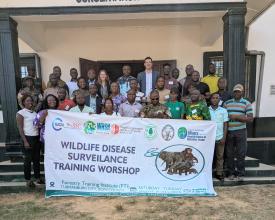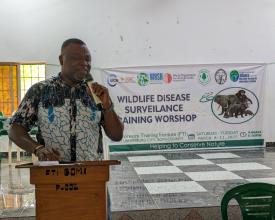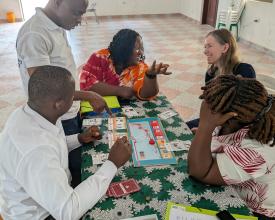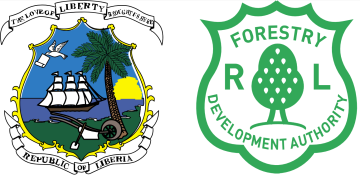
Advancing National Wildlife Disease Surveillance Planning in Liberia
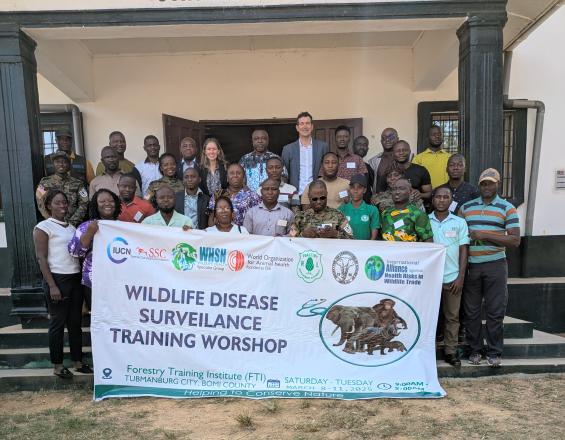
Wild animal populations are critical for ecosystems and people. In Liberia, surveillance is not routinely conducted in wildlife, despite growing health threats. In March 2025 a training was held to strengthen Liberia’s capacity for wildlife surveillance, building on IUCN-WOAH “General Guidelines for Surveillance of Diseases, Pathogens, and Toxic Agents in Free-Ranging Wildlife”, providing a chance to apply the Guidelines in a national context and gain feedback. Organized with national and international stakeholders, the training sought to enhance knowledge and intersectoral collaboration to monitor and mitigate wildlife-related health risks, through an overview of surveillance; reflection on recent surveillance initiatives; the ALERT game that simulates real-world surveillance scenarios; a field-based portion for surveillance scoping at human-animal-environment interfaces; and designing surveillance programs. A visit to the Central Veterinary Laboratory and Fendell Wetland reinforced surveillance system connections.
Impacts
With participation from 13 institutions and strong stewardship by the national wildlife authority, the training reinforced One Health collaboration and benefitted from practical insights from the field, including ideas for advancing a national surveillance program that leverages existing expertise and capacity in the country. It also strengthened Ghana-Liberia collaboration through expertise sharing and training support from the WOAH National Focal Points for Wildlife, which can serve as a basis for wider regional collaboration. The training validated the utility of the Guidelines and identified potential additions, such as the importance of politician stakeholders in the prioritization of surveillance programs. A pre-post training assessment demonstrated learning about purposeful surveillance: Before the training, 48% of participants correctly selected the first step in the design of a surveillance program (“Define the goal of the surveillance”), which increased to 85% after the training. Additionally, 80% of participants identified feeling fully or mostly confident about their ability to play a role in disease surveillance in wildlife post-training. Participants also designed surveillance programs that will provide baseline information to assess and ultimately help manage risks; these are being taken up currently through pilot projects, aligning skills and resources across institutions.
